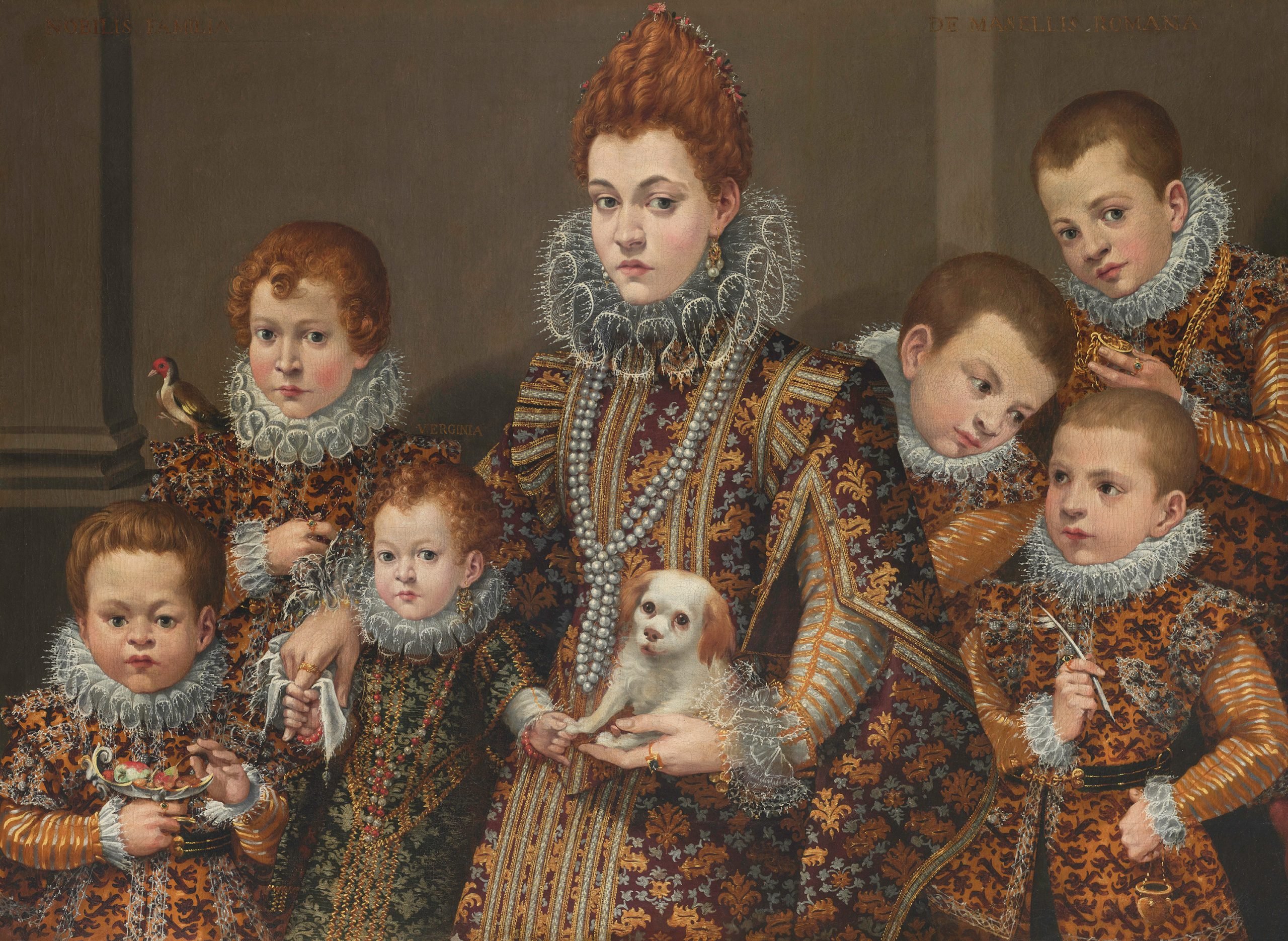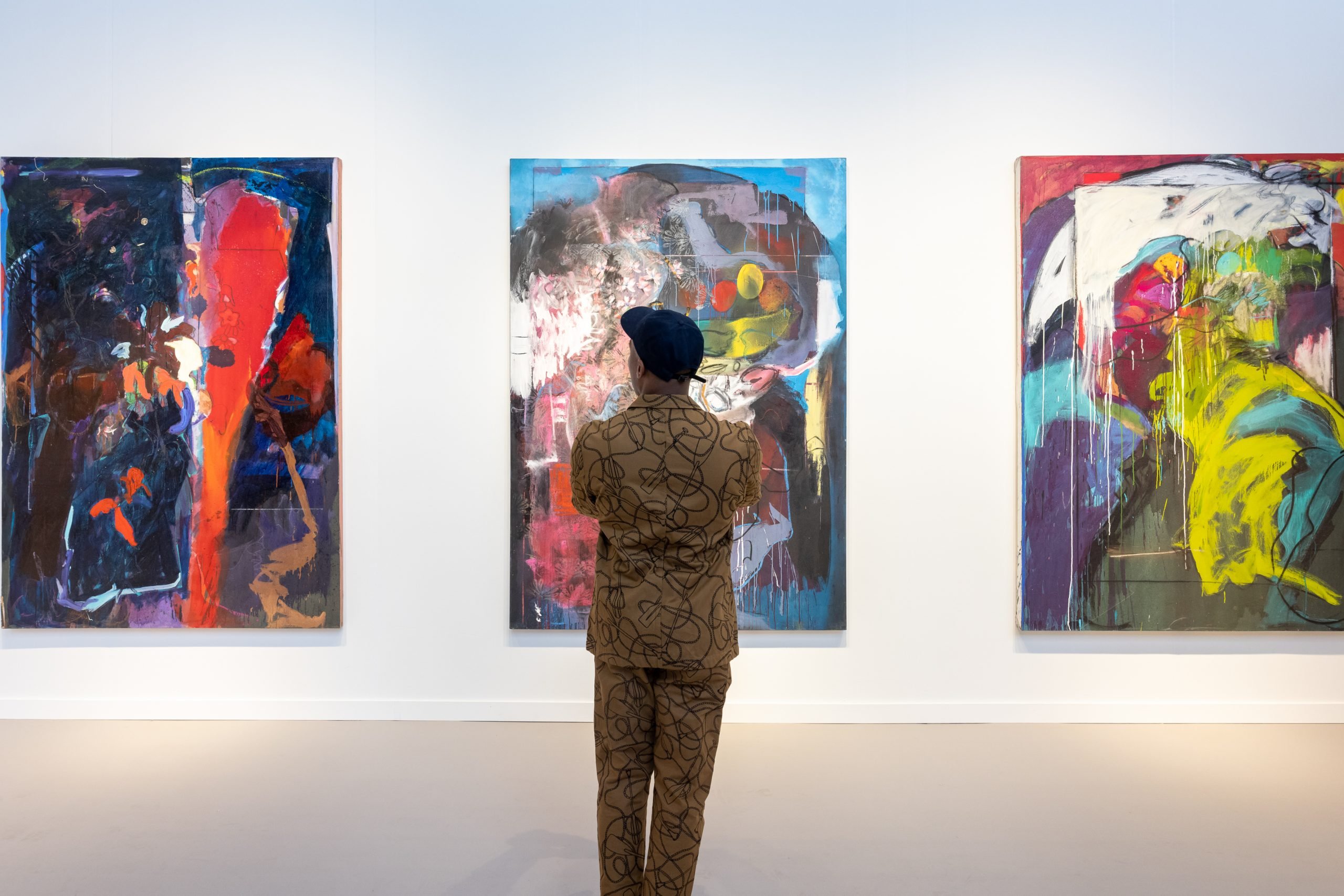

The concept of “value” is at issue in numerous art disputes, often to calculate the measure of damages for lost, stolen or damaged artwork. Understanding how value is determined in the art market is also essential when assessing the relative importance of information disclosures and representations in art transactions. This excerpt from Michael Findlay’s new book, The Value of Art: Money, Power, Beauty, published this year by Prestel, provides an expert’s insight on this issue. It is reprinted with the generous permission of the author and the publisher.
• • •
What Determines the Commercial Value of Art?
Like currency, the commercial value of art is based on collective intentionality. There is no intrinsic, objective value (no more than that of a hundred-dollar bill). Human stipulation and declaration create and sustain the commercial value.
The reason that many people continue to be astonished or enraged when they hear that a particular work of art has been sold for a large sum of money is that they believe art serves no necessary function. It is neither utilitarian, nor does it seem to be linked to any essential activity. You cannot live in it, drive it, eat, drink, or wear it. Even Plato considered the value of art to be dubious because it was mimesis, an imitation of reality.
If you gave most people $25 million and the choice to spend it on a six-bedroom house with spectacular views of Aspen or a painting by Mark Rothko of two misty dark-red rectangles, the overwhelming majority would choose the house. We understand the notion of paying for size and location in real estate, but most of us have no criteria (or confidence in the criteria) to judge the price for a work of art. We pay for things that can be lived in, driven, consumed, and worn; and we believe in an empirical ability to judge their relative quality and commercial value. No matter how luxurious, such things also sustain the basic human functions of shelter, food, clothing, and transport.
A body of new work by any artist is usually consistent in theme, but not necessarily in scale. What makes one painting or sculpture more or less expensive than another in this primary market is usually size. Although the artist’s audience has not yet rendered an opinion about which type of work is better or more desirable than any other, and the artist may feel some smaller works are better than some larger ones, usually size wins out, and the smallest works are usually the least expensive. The larger the work, the higher the price, with the exception of paintings and sculptures that may be too large for domestic installation and require the kind of space usually found only in institutions, office buildings, shopping malls, and casinos. Such works may be proportionately less expensive because they are harder to sell.
Depending on the medium used by the artist, there may be a cost of manufacture to consider. In 1895 Auguste Rodin had to pay Le Blanc Barbedienne Foundry in Paris when he cast his Burghers of Calais in bronze. Today Richard Serra has to pay Pickhan Unformtechnik in Siegen, Germany for fabricating his vast steel Torqued Ellipses [ed. note: references to the many images reproduced in the book are omitted from this excerpt]. These costs are passed on to the first buyers of the work. Many artists create sculpture in editions. If there are five or ten copies of a sculpture, the primary market price will be less for each one than for a unique work of similar size, medium, and appearance by that artist.
Aside from these casting expenses, the cost to the artist for materials used in painting and drawing, though perhaps not insignificant, is not a consideration when it comes to pricing the works. Oil on canvas is generally known to be a highly durable medium. Short of direct trauma, it can withstand handling and extremes of temperature and humidity, as well as sun-light. Not so works on paper, which are usually priced lower to account for their greater fragility. This has led to the notion that works on paper are inherently worth less than paintings, despite the fact that the secondary market in some cases has placed a higher value on works on paper than on oils by certain artists, such as Edgar Degas and Mary Cassatt.
Another rule of thumb with the primary market of works on paper is that those with color, be they rendered in oilstick, gouache, watercolor, or crayon, will be priced higher than works that are monochromatic: graphite, charcoal, or sanguine.
When it comes to making lithographs, etchings, silkscreens, and other types of editioned works on paper, costs can be considerable. Printmaking is an art that involves not only the creative talent of the artist who conceives the image, but the skill of master printers using sophisticated and expensive equipment.
The Secondary Market
Other than the purchase of new work either directly from the artist or the artist’s dealer, all art purchases, whether of Dutch Old Masters, 19th-century English seascapes, Impressionist paintings, or Cubist masterpieces, are secondary-market transactions.
Once an artist achieves a degree of stature, a secondary market in his or her work is inevitable during the artist’s lifetime. How is the commercial value of an art object decided in the secondary market when it is resold by the first owner? Most things we buy are worth less once we have used them. A car usually is, as are clothes we give to charity. In addition, appliances and electronics have less value when succeeded by newer models. When the real-estate market booms, the second owner of a home may pay more for it than the first, but in a stable market the second-hand house is likely to be worth less than a new one of the same size, design, materials, and location.
Once art passes out of the hands of the first buyer, its commercial value is largely determined by the principle of supply and demand, but it can be managed by the artist’s primary dealer. When making a primary-market sale, I am sometimes asked if I will resell the work when and if the client so decides. I usually agree. By doing this dealers can participate in the pricing of secondary-market works by artists they represent.
Some art dealers, both those with galleries and “private” dealers, (sometimes operating out of their homes), represent no artists directly but buy and sell work by living artists. They may not have any direct relationship with the artist but may be very knowledgeable about the work, and by promoting it they are usually contributing to the solidity of that artist’s market.
Even in the primary market, the relative availability real or imagined, of a particular artist’s work is key. The art dealer rarely says, “Andy’s studio is packed to the gills with hundreds of paintings just like this one, so take plenty of time to choose the one you want.” Rather: “I’m not sure if there will be any more like this; he’s painting very slowly, and we’ve sold the few others we had to very important museums and collectors.”
A little history. When I entered the art trade in the mid-1960s, there were only a few living artists whose works regularly appeared in the secondary market. They were mostly modern European masters like Picasso, Joan Miró³, Marc Chagall, and Salvador Dalí. Very few midcareer American artists, even those with major reputations, appeared at auction, and virtually no younger contemporary artists did. The postwar American generation of Abstract Expressionists was well established (Jackson Pollock, Arshile Gorky, and Franz Kline were already dead), and the paintings they did in the late 1940s and 1950s were in demand by the mid-1960s, mostly sold by secondary-market dealers. Only rarely did their works come up at public auction. Exceptions include a 1940 painting by Willem de Kooning that was sold in the Helena Rubinstein auction at Parke-Bernet in April 1966 for $20,000.1 In October 1965 a group of paintings, including works by Rothko, Franz Kline, Clyfford Still, Barnett Newman, and de Kooning, was consigned to Sotheby Parke Bernet by the taxicab mogul Robert Scull, who with his lean, well-coiffed, and miniskirted wife Ethel had turned his attention to the younger generation of Pop artists, including Jasper Johns, Robert Rauschenberg, Andy Warhol, Tom Wesselmann, and James Rosenquist. The sale of Scull’s paintings totaled $211,450. Police Gazette (1955), an abstract landscape by de Kooning painted ten years earlier, in 1955, fetched $37,000. Forty-one years later the New York Times reported that it had sold privately for $63.5 million. These examples notwithstanding, in those days auction houses generally avoided selling works by living artists with primary gallery representation.
This pattern ended loudly and finally in October 1973 with the second Scull sale at Sotheby Parke Bernet.2
Supply
Veteran art dealer William Acquavella often tells his clients, accurately, “You can remake your money, but you can’t remake the painting,”3 meaning: you can earn the cost back, but if you miss the opportunity to buy the work when it is available, it is likely gone forever.
Real or imagined, rarity is the ne plus ultra when art is sold. Not only does it justify the price, it also suggests an exclusive club of ownership: “The only other one like this is in the Metropolitan Museum of Art.” Considering the purchase of a work by a living artist, a collector might be told, “She’s not going to make any more paintings like this one,” although there are numerous instances of aging artists revisiting the themes of their fruitful youth, either out of nostalgia or penury. What can be counted on perhaps is that there will be no more paintings like that one with today’s date.
Claims of rarity also have to be examined carefully because not only do artists often explore specific themes in a variety of mediums (paint, pastel, pencil, print), but total output varies widely from artist to artist. Monet who lived until he was eighty-six, painted virtually every day of his life, and produced 2,000 paintings is considered to be prolific. Van Gogh died at thirty-seven having made 864 paintings, and Pollock died at forty-four having produced just 382 works on canvas. The most useful tool in determining just how many paintings an artist made of any particular type is the comprehensive listing of his or her entire output known as the catalogue raisonné, which translated literally means “critical catalogue.”
Catalogues Raisonnés
Until the advent of the camera it was difficult to document and record accurately the full extent of any artist’s body of work. Scholars of premodern art have to rely on documentary evidence, such as artists’ hand lists and records, bills of sale, letters, known public commissions, and the like.
By the time of the Impressionists the camera was in popular use, and it became standard for artists to have their works photographed, albeit in black and white. This greatly enhanced the creation and use of catalogues raisonnés, which became an essential tool in determining supply Most indicate the past and (as of the date of publication) present owners of each work listed. Thus, it is possible for the seller of a painting of water lilies by Monet to show a prospective buyer exactly how many of that type, size, and date were painted. A knowledgeable dealer will be able to combine the information in the catalogue raisonné with his or her own knowledge of current ownership and infer how many (or rather, how few) of a particular type of work are ever likely to be sold.
The publication of a catalogue raisonné may have a strong effect on the value of an artist’s work because it defines the supply empirically and provides the basis for reasonable assumptions regarding whether any particular work might be available. A painting designated “Art Institute of Chicago” is likely off-limits forever, whereas “Mr. and Mrs. Worthalot, Los Angeles,” could be approached with an offer to buy.
Warhol called his studio the Factory and he produced many seemingly identical works (in series, not unlike Monet). When Warhol died in 1987, he was highly celebrated, and paintings of his most publicized subjects (Campbell’s soup cans, Marilyn Monroe) commanded high but not spectacular prices. The first two volumes of his catalogue raisonné appeared in 2002 and 2004 and cover just eight years of his work (1961-69).4 Almost immediately prices increased, in part because it was evident that although there were indeed many images that he used over and over again, he varied color and size so that not only did each work now appear to be genuinely unique, but the actual number of works in any series (Flowers; Elvis; Dollar Signs) turned out to be less than many people supposed.
Art historian and magazine editor Christian Zervos began to catalogue Picasso’s work in 1932 with the participation of the artist and died in 1970 having produced twenty-two volumes. Picasso died in 1973, and by 1978 a further eleven volumes were published by Zervos’s successors.5 Catalogues raisonnés themselves are not inexpensive. The complete set of “Zervos” sells for approximately $50,000. It is virtually indispensable for museums, libraries, and anyone who deals in work by Picasso. Not all artists are so lucky: Renoir died in 1919, and it was fifty-two years before the first volume of his catalogue raisonné was published.6 This volume lists only his paintings of figures (no landscapes or still lifes) done between 1860 and 1890. No subsequent volumes have yet appeared. Modigliani has been favored with at least five catalogues raisonnés, only one of which is generally accepted as reliable.’7 Â Unscrupulous authors may, for a consideration, include a work of dubious authenticity thus rendering the entire book suspect.
There is usually a period in every artist’s work life that informed opinion considers to be better than the rest. Like the reputation of artists themselves, this opinion can of course change over time. For American buyers of French painting in the middle of the 20th century the birth of Impressionism was considered to be the best period, and works by virtually any Impressionist artist dating from the early years 1872-74 commanded premium prices. These works are generally discreetly casual in composition, rural in subject matter, and painted with small brushstrokes. Now, forty years on, the “must-haves” by Monet and Camille Pissarro are their later paintings, which have vigorous large brushstrokes in strong colors and include scenes of urban life. Currently, 1982 is considered to be the late American artist Jean-Michel Basquiat’s best year. In forty years’ time that opinion may change, but the number and nature of the paintings he did in 1982 will remain identified in a catalogue raisonné.
Presently, some of the most popular and expensive of all Impressionist paintings are the canvases Monet painted of his famous water lily garden at Giverny. Between 1904 and 1908 Monet created his highly prized series of seventy-nine paintings of that subject. Of those seventy nine, three have disappeared, and twenty-seven are in museums that are unlikely to ever sell them. That leaves forty-nine in private collections. While some collectors cultivate the reputation that they will never sell, no one is immortal, and in time each of those forty-nine will come on the market. That, however, is a minuscule amount when compared with the considerable number of extremely well-heeled collectors extant and yet to be minted, for whom the ownership of such a work is a top priority.
Institutional Holdings
All works owned privately, even gifts promised but not yet given to museums, are in fact potentially available. Works that have been formally accessioned by public museums constitute the “Fort Knox” of works by that particular artist and are off the market. The more works by an established artist that are in public museums, the smaller the supply for the market and the higher the value of those that do circulate.
In many countries in Europe and Asia museums are owned or controlled by the national governments and are prohibited from selling. In the United States, with the exception of the National Gallery of Art in Washington, D.C., most museums were founded by private individuals and are run as not-for-profit institutions governed by boards of trustees. The Code of Ethics for the American Association of Museums has stringent guidelines for deaccessioning (selling) works that have been bought by or given to a member institution. An important provision states that “in no event shall they [proceeds from the sale] be used for anything other than acquisition or direct care of collections.’8
The likeliest candidates for sale are donated works that duplicate what the museum already holds and works of such patent inferiority that they are never likely to be exhibited. Nevertheless, even sales by museums that conform to the guidelines often create controversy, the usual argument being that disposing of works that are currently unpopular may shortchange a future generation with different tastes.
A small number of institutions that might appear to be public are privately owned, and the owners may sell works in the collection. This was the case with the Norton Simon Museum in Pasadena, California, during Simon’s lifetime. The vast majority of works in museums, however, are genuinely out of circulation.
The collector Tony Ganz, whose parents owned a legendary collection of 20th-century art, tells of having a playdate with a school friend at the age of six. On entering the house he said innocently, “Where are your Picassos?” It is fair to say that only a small percentage of art lovers grow up in or around collecting families, and the notion is widespread that most or all art by well-known artists, particularly dead ones, is in museums.
What continues to amaze me is how quickly this sense of limited supply is reversed when collectors find themselves able to afford the great art they once saw only in books and museums. Many then assume that there are plenty of top-quality Monets, Picassos, Pollocks, or Warhols out there and that all it takes is their ability and willingness to put a digit and seven (or even eight) zeros on the table to have a van Gogh, “just like that portrait at the Museum of Fine Arts, Boston.”
The next stage in their education is to find out the painful truth, which is that there are only four such portraits in private hands that might equal the one in Boston, all much smaller. Of these, one is in France and unlikely, for tax reasons, to surface; one is in a private collection in Osaka; the third is promised by its owner to a museum; and the fourth just might, if the collector is extremely patient, become available within the next ten years.
Behind the perception that most great works are in museums lies some truth, but with serious qualification. Historically, museums are often slow off the mark to acquire art of the present time, even as gifts. In the 20th century there were many instances of museums turning down individual works or entire collections of great distinction. French Impressionist painter Gustave Caillebotte died in 1894 and left almost seventy great works by his fellow artists to the French nation with the stipulation that they should, within twenty years, be exhibited. This now famous bequest was refused not only in 1894, but again in 1904 and 1908. Eventually some of the paintings did make it into the Louvre (others went to the Barnes Foundation in Philadelphia). Decades later, in 1944, an extraordinarily diverse collection, including great modern paintings and Marcel Duchamp’s most important works, were offered by the Los Angeles collectors Walter and Louise Arensberg to the University of California if they would build a museum to house the collection. The university would not, and after negotiations fell through with other institutions, including the Denver Art Museum, the Art Institute of Chicago, and the National Gallery of Art in Washington, D.C., the Arensberg Collection finally found a home at the Philadelphia Museum of Art in 1954. On the other hand, it is the museum’s job to exercise curatorial judgment, and museums cannot afford to warehouse every gift just in case the artist survives the tests of time.
For three decades art-market commentators have been suggesting that the market supply of Impressionist paintings is dwindling. But this is not supported by the facts. Compared to the very considerable number of works that have been bought by private collectors, relatively few have been given to or purchased by museums that acquired most of their Impressionist collections prior to 1980. This means that virtually everything that has been sold, privately and at auction, in the last thirty years is in fact still capable of circulating, along with thousands of Impressionist paintings and drawings, as well as sculpture, still in the hands of families that acquired them forty years ago or more. In fact, there are far fewer post-World War II works of art available than 19th- and early 20th-century works because many of the artists were not prolific and important works by Kline, Rothko, Pollock, and de Kooning were acquired already in the 1950s by American and European museums.
What Makes a Specific Work of Art Valuable?
Auction results are available online in various guises and combinations, one of the most popular sites being Artnet.com. Inexperienced collectors, as well as an increasing number of their advisors, only consult these online statistics to determine the commercial value of what they deem to be somewhat similar works offered to them. Raw numbers, however, are useless unless interpreted with facts exclusive to each work of art, as well as the circumstances of the sale. To arrive at the market value of a work of art, the following five attributes must be known and weighed carefully:
- Provenance
- Condition
- Authenticity
- Exposure
- Quality
Provenance
Once a work of art has entered the secondary market, it has achieved a history of ownership, called provenance, a French term for the history of ownership of a valuable object.
The degree to which an appealing provenance may actually increase the value of a work is very difficult to determine accurately, but in my experience former ownership by a celebrated collector, past or present, lends more value to a work of modest or intermediate quality than a great work, which will achieve its value on its own merits. At most the added value might be 15 percent. There are exceptions. Sotheby’s sale in May 2007 included Rothko’s Untitled (Yellow, Pink and Lavender on Rose), which belonged to David and Peggy Rockefeller. Because the proceeds were destined for charity, David Rockefeller allowed himself to be photographed with the work, and Sotheby’s waged an extremely aggressive marketing campaign leaning heavily on the Rockefeller provenance. The painting sold for $72.84 million. The following evening, Christie’s offered a Rothko similar in size and date, possibly less dramatic in color and definitely with a less-exalted provenance. It fetched a mere $29,920,000.
Condition
A condition report is a document itemizing the result of the physical examination of a work of art by a professional in the field, usually someone whose main occupation is the conservation and restoration of works of art similar in medium, period, and style to the work being scrutinized. The stronger the credentials of the professional, the more weight is given to the condition report. Art dealers and auction houses tend to produce succinct condition reports with one-line conclusions such as, “Overall good condition for such a painting of this period.” Conservators who work exclusively for or with museums tend to produce eye-swimmingly detailed condition reports, the sheer length of which can alarm the neophyte. Conservators who work in the field, with private clients and galleries, as well as museums, tend to use less technical language and, most important, compare the condition of the object in their hands with the norm for that particular type of object, its age, and authorship, based on their wide experience. A certain amount of wear and tear and prior restoration might be expected with any Impressionist painting over a hundred years old, while similar conditions in a Minimalist painting dating from the 1960s might make it unsalable.
The impact of condition on value is often a function of the culture and changing taste. Fifty years ago American buyers of Impressionist paintings liked them to be bright and shiny, which sometimes led to them being overcleaned and heavily varnished. Many galleries and even major museums automatically relined these paintings, gluing a second canvas to the back of the original, often using heat and wax in the process. Today buyers of Impressionist works will pay a premium for paintings that are not relined and have only modest restoration.
Quality
By now it should be apparent that while there are many factors in the creation of the commercial value of a work of art, few are empirical and most are relative. None more so than quality.
No two persons looking at the same painting, sculpture, or drawing are having the same experience. Their eyes may receive the same information, but their brains process it in very different ways. Part of what we process in the split second that we lay our eyes on a work of art is what it may remind us of, consciously or subconscious and what we know about the artist if we recognize the hand. If you and I look at a painting of a red dog by Picasso, I may be drawn to it and declare it is top quality because it is a work by an artist I love of a subject that I like in my favorite color. You, on the other hand, say it is truly terrible because of the wav you feel the artist treated women, because as a child you were bitten by such a dog, and because red is your least favorite color. Neither you nor I may be judging the quality of the work in any commercial sense; we are bringing our own experiences to bear, and that is not only inevitable but part of the process of experiencing art.
What many people who spend a lot of time looking at art do agree on is what separates a successful work of art from one that may be merely interesting or typical. Mastery of the medium, clarity of execution, and authority of expression are vital criteria applicable to all works of art, regardless of style or subject. Artists themselves are not always the best judges of their own work, and financial need or simple egotism may spur them to offer for sale works of mixed quality. Not everything touched by a well-known artist is a masterpiece; some scraps are worth little more than an autograph. While van Gogh agonized over every painting he made and may have destroyed or painted over as many as he declared finished, Renoir, who painted every day of a much longer life, seems to have happily let his dealers sell even his most modest and unsuccessful daubs, as well as his many acknowledged masterpieces.
While the works of an artist who achieves great popularity may be of the highest quality the body of work of most artists includes a range of quality. Picasso mastered many different methods of expression, and in almost every period or style he produced works of mixed quality from the transcendent to the slapdash. This is often the case.
An eye for quality is easily trained by simply seeing as much as possible, in the flesh, by a particular artist and artists of the same school. Joseph Hirshhorn was self-educated, but he looked at a lot of art, and I took him to the studios of many artists whose work he was seeing for the first time and who had no track record. Time after time he selected, quite swiftly, the four or five best works in the studio.
New York, New York
November 2012
Michael Findlay
Acquavella Galleries, Inc.
Notes
1 The Collection of Helena Rubenstein [Princess Gourielli]: Modern Paintings and Sculpture, two parts, Parke-Bernet Galleries, New York, April 20 and 29, 1966, sales 2428 and 2431. The de Kooning was cat. no. 72 of the first sale.
2 A Selection of Fifty Works from the Collection of Robert C. Scull [Post-war and Contemporary Paintings and Sculpture from the Collection of Robert C. Scull], Sotheby Parke Bernet, New York, October 18, 1973, sale 3558.
3 William Acquavella, in conversation with the author, June 2009.
4 George Frei and Neil Printz, eds. The Andy Warhol Catalogue Raisonné, vol. 2, Paintings and Sculptures, 1964-1969 (London: Phaidon, 2003).
5 Christian Zervos, Pablo Picasso: 1895-1973, 33 vols. (Paris: Éditions Cahier d’art, 1932-78).
6 François Daulte, Auguste Renoir: Catalogue raisonné de l’oeuvre peint, vol. 1, Figures, 1860-1890 (Lausanne: Éditions Durand-Ruel, 1971).
7 Arthur Pfannstiel, Modigliani et son oeuvre: Étude critique et catalogue raisonné (Paris: Bibliothèque des Arts, 1956); Joseph Lanthemann, Modigliani, 1984-1920: Catalogue raisonné; Sa vie, son oeuvre complet, son art (Florence: Ed. Vallecchi, 1970); Amboglio Ceroni and François Cachin, Tout l’oeuvre peint de Modigliani (Paris: Flammarion, 1972); Christian Parisot, Modigliani: Catalogue raisonné, peintures, dessins, acquarelles, (Livorno: Ed. Graphis Arte, 1990);Osvaldo Patani, Amedeo Modigliani: Catalogo generale Milan: Leonardo, 1991).
8 American Association of Museums, “Code of Ethics for Museums,” http://www.aam.us.org/museumresources/ethics/coe/cfm (accessed August 8, 2008).
Editor’s Note
This is Volume 3, Issue No. 2 of Spencer’s Art Law Journal. This Fall issue contains excerpts from a recently published book, and two essays which will become available by posting on artnet starting November 2012.
This issue opens with an excerpt from Michael Findlay’s new book, The Value of Art: Money, Power, Beauty. How the art world values art is important because the concept of “value” is at issue in art disputes, often to calculate the measure of damages for lost, stolen or damaged artwork. How value is assessed is also essential when deciding on the information disclosures and representations in art transactions.
The first essay (Stemming the Tide … ) discusses a development in federal law that eliminates the option of using the federal Lanham Act to sue experts over statements regarding authorship or authenticity of works of art. While this legal issue was most recently decided in federal court in New York in Gilbert v. Indiana, in a lawsuit against the artist Robert Indiana, this decision also benefits experts providing expert opinions about art. Eliminating Lanham Act claims is a particularly important development, and heartening to those who care about preserving the role of scholarship in the art world, because Lanham Act claims expose defendants to liability for up to three times the amount of actual damages plus the plaintiff’s attorneys’ fees. Such claims were therefore disproportionately likely to place extreme pressure on experts when a disgruntled owner challenges an opinion.
The second essay (Street Photography …) provides an introduction to the individual right of privacy and right of publicity, which is recognized in New York’s Civil Rights Law. These rights often come into conflict with those of artists, particularly photographers, when they depict individuals who then object to this use of their likeness. These disputes are particularly interesting because under New York law, there is a defense that the work at issue is “art,” which by its nature requires courts to decide, as a matter of law, what is “art.” By focusing on a recent lawsuit against street photographer Philip-Lorca diCorcia and diCorcia’s assertion of the “art” defense, the essay discusses the various ways that courts have attempted this definitional task.
Three times a year, issues of the Journal continue to address legal issues of practical significance for institutions, collectors, scholars, dealers and the general art-minded public.
— RDS
Follow Artnet News on Facebook:
Want to stay ahead of the art world? Subscribe to our newsletter to get the breaking news, eye-opening interviews, and incisive critical takes that drive the conversation forward.






